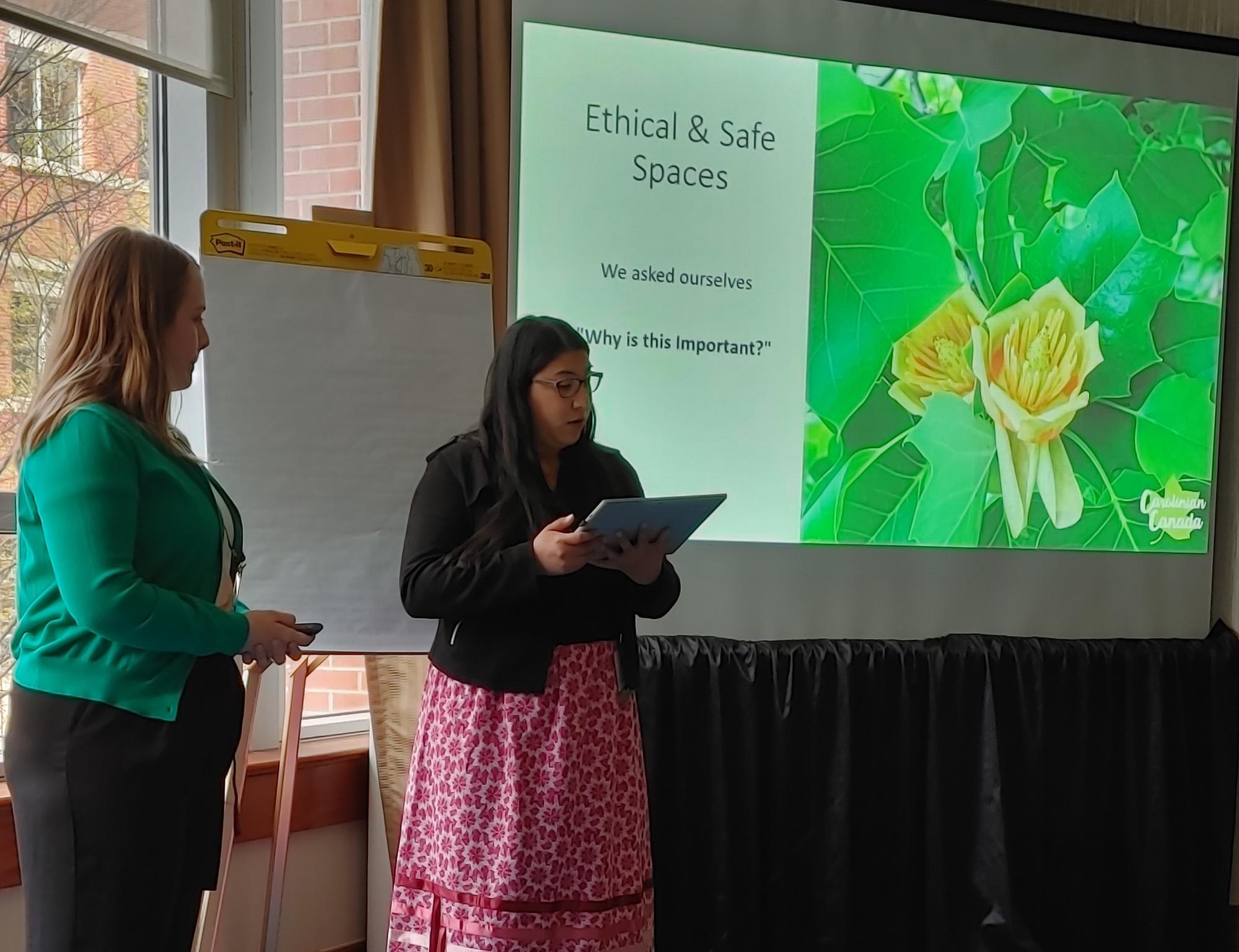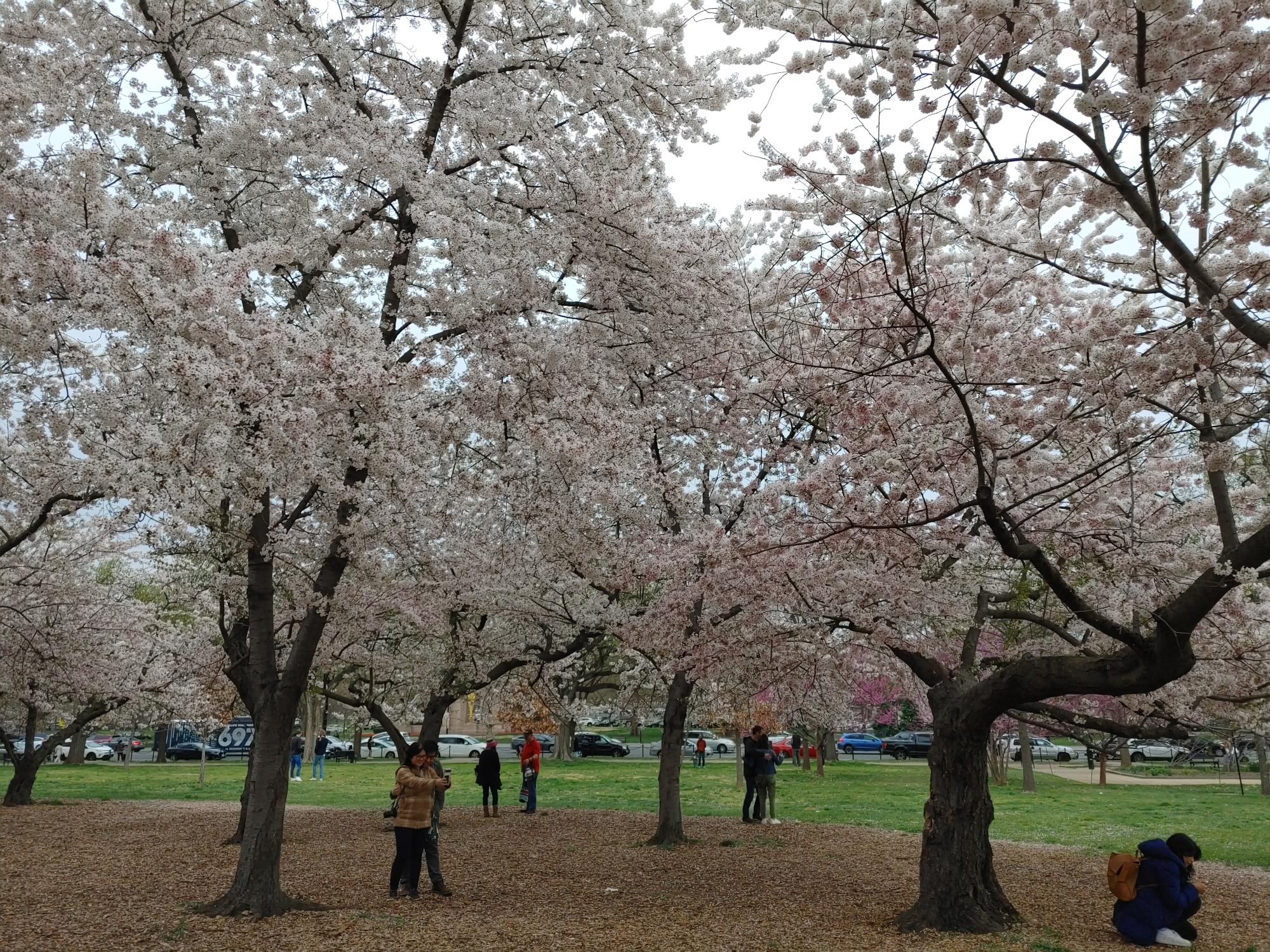The Southern Ontario Seed Strategy (SOSS) team from Carolinian Canada is feeling hopeful and rejuvenated after returning from the U.S. National Native Seed Conference held in Washington, D.C.
The National Native Seed Conference took place from March 27th to 30th, 2023, and created space for multiple sectors to connect on their work in partnership with native seeds and plants, which included representation from Indigenous nations, research, industry, land management, and restoration.
At the conference, the CC team gave a presentation on the SOSS, sharing key learnings and experiences relating to approaches to working together that are rooted in ethical space. The presentation also shone a light on southern Ontario and the great need for a seed strategy to support biodiversity in this important region.
Approaches to Working Together Rooted in Ethical Space
“Our presentation was well received with many thoughtful questions from audience members,” said Amy Hall, Manager of Ecosystem Recovery with CC. “We made meaningful connections with fellow presenters in the ‘Partnerships with Tribal Nations’ session track including another presenter from Ontario. All sessions blended nicely together and found common ground in a two-eyed seeing approach.”

Photo: Jennifer Nantais
The SOSS presentation followed a two-eyed seeing workshop led by Dr. Cristina Eisenburg on the previous day, and the team was encouraged upon seeing high participation in both sessions. The work with the SOSS closely mirrors the work Cristina has been doing in the U.S.
“One memorable moment was joining the workshop Two-Eyed Seeing: Basic Principles of TEK Ecological Restoration Partnerships by Dr. Cristina Eisenberg,” said Sam Whiteye, Indigenous Leadership Director with CC. “It was great to see very similar work across the sector and even state lines that is founded on principles that the SOSS is aligned with. I felt our presentation fit extremely well within our stream of working and building tribal partnerships because all the presentations in our stream were focused on Indigenous work and projects across the territories. It was awesome to learn and meet other Indigenous folks.”
“Our presentation fit well into the session and set the tone for a week of sharing and connecting,“ said Jennifer Nantais, Program Specialist with CC. “We were pleased to meet with partners and new friends to share values, experiences, history, culture, respect for the land, and efforts to be a part of the solution.”
Integrating the work from the SOSS with voices from all over North America put the SOSS progress into perspective and will help to shape the future direction of the strategy as it develops.
Key Learnings
One key takeaway of the SOSS team was that although each region or ecosystem faces its own unique challenges, we all face similar obstacles in our daily work and are united with common goals.
"I think what was most eye opening was looking at the comparison and work that the U.S. has done to create a seed strategy and network, organize state and federal groups, and create programs across the land while providing ample funding to do it,” said Whiteye. “They have done extensive work with policy, which greatly helped their efforts to speed up the process on implementation of the strategy.”
“We need more seed and there are many barriers to getting more seed; however, there are also many opportunities,” said Hall. “There is extensive work happening across the continent for seed conservation and land restoration. Systems and solutions have been developed in many regions that can be adapted for use elsewhere. It is important to stay connected and to talk with our colleagues, even in other countries, because we are all working through similar problems and there is so much knowledge to be shared.”
"We all face seemingly unsurmountable challenges and barriers, but many passionate people are working together toward shared goals and making amazing progress,” said Nantais. “Though our struggles may differ, we can work together and learn much from each other.”
“The states created a good template to do this work, but I believe our seed strategy could take it a step further by adding in a two-eyed seeing approach and by collaborating closer with Indigenous Nations,” said Whiteye.
There is still progress to be made with Indigenous partnerships and our role with the SOSS is to show our colleagues in Canada and beyond how we are ensuring Indigenous voices are reflected in our work on the land.
Memorable Moments
The team enjoyed seeing Washington’s famous cherry blossoms that were blooming just as the conference took place.
 Photo: Jennifer Nantais
Photo: Jennifer Nantais
“The love that residents and tourists feel for these beautiful trees is powerful, just like the connection to native plants that is taking root in the hearts of people everywhere,” said Nantais. “The more people learn about native plants, the more we can work together to restore them and heal the land.”
The conference also worked hard to centre Indigenous voices, creating room and offering scholarships for Indigenous folks, and accommodating registration for events and workshops where space was limited.
“They offered a field trip to Bull Run Mountain Preserve, and when the organizers found out that I wasn’t on the list due to technical glitches, they made room,” said Whiteye. “To work with us and see that we were very much equally represented, offered opportunities, and to correct any errors on their part meant the most to myself and other Indigenous attendees that I talked with.”
Overall, the conference was a big success, selling out tickets and workshop seats – and it is projected that the conference will be even bigger next time it takes place.
“It is encouraging to see the momentum in seed conservation – it makes us feel hopeful that we are headed in the right direction and that these efforts will be seen as native plants and seeds reclaim their place on the landscape,” said Hall.
Going Forward with Inspiration
“Individuals and organizations across the landscape are at varying stages of the restoration process, and our team was honoured to share our progress with others while continuing our learning journey,” said Nantais.
“Our colleagues in the U.S. have developed impressive programs and tools that can inform the work of the SOSS,” said Hall. “The U.S. National Seed Strategy serves as a framework to guide the SOSS development, and programs like ‘Seeds of Success’ can inform the creation of a central seed communication network in southern Ontario.”
“I feel very grateful we could go present and attend this conference,” said Sam. “It was a wonderful experience of learning, connecting with different lands and Indigenous people.”
Bringing learnings from Washington back home with us to southern Ontario, we will integrate what we have learned to develop a strategy that is unique to our region and contains a two-eyed seeing approach.
